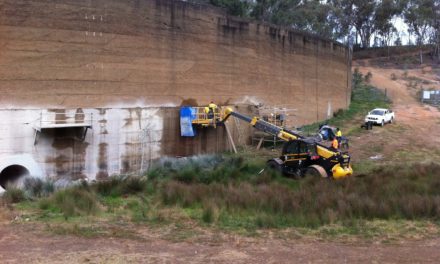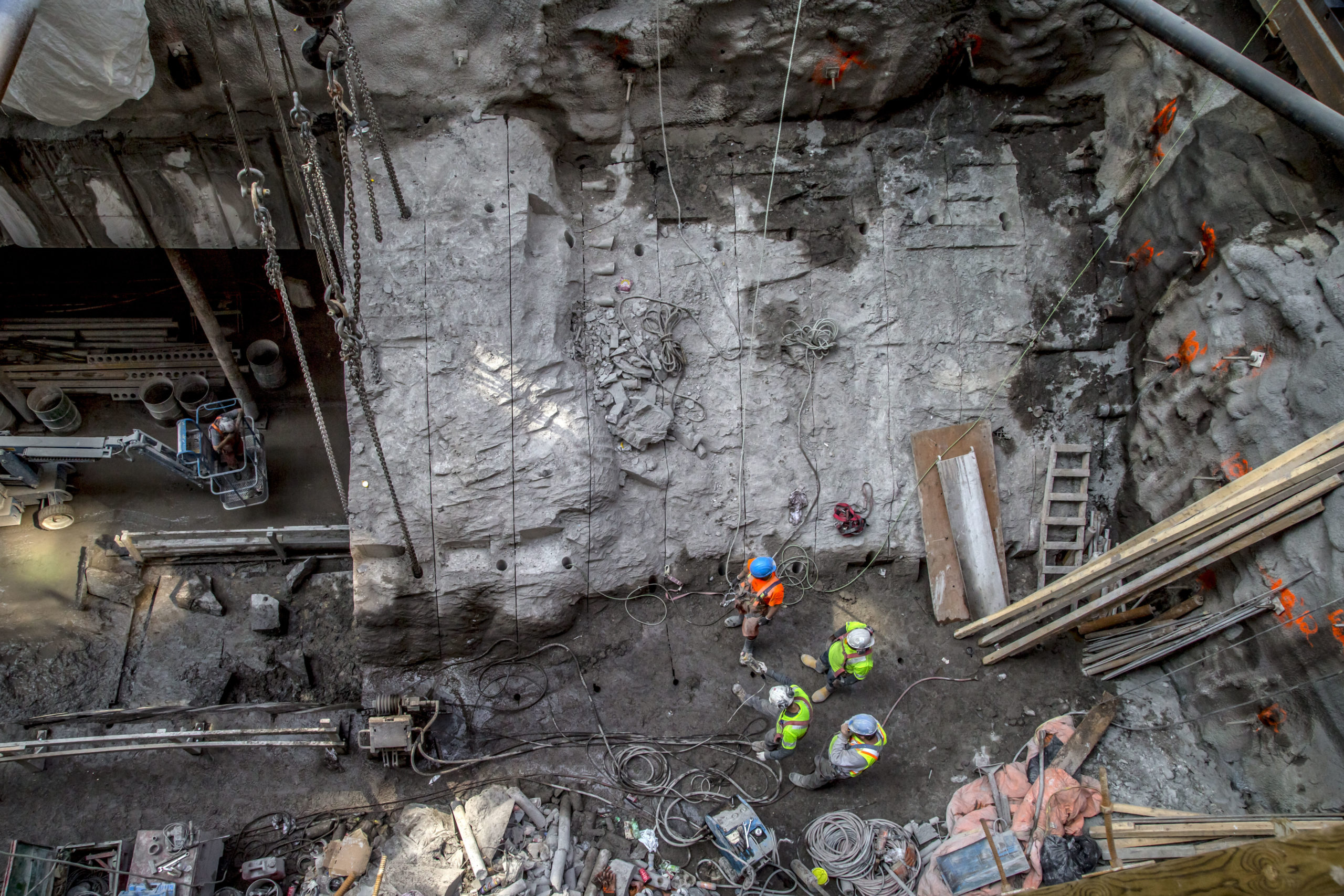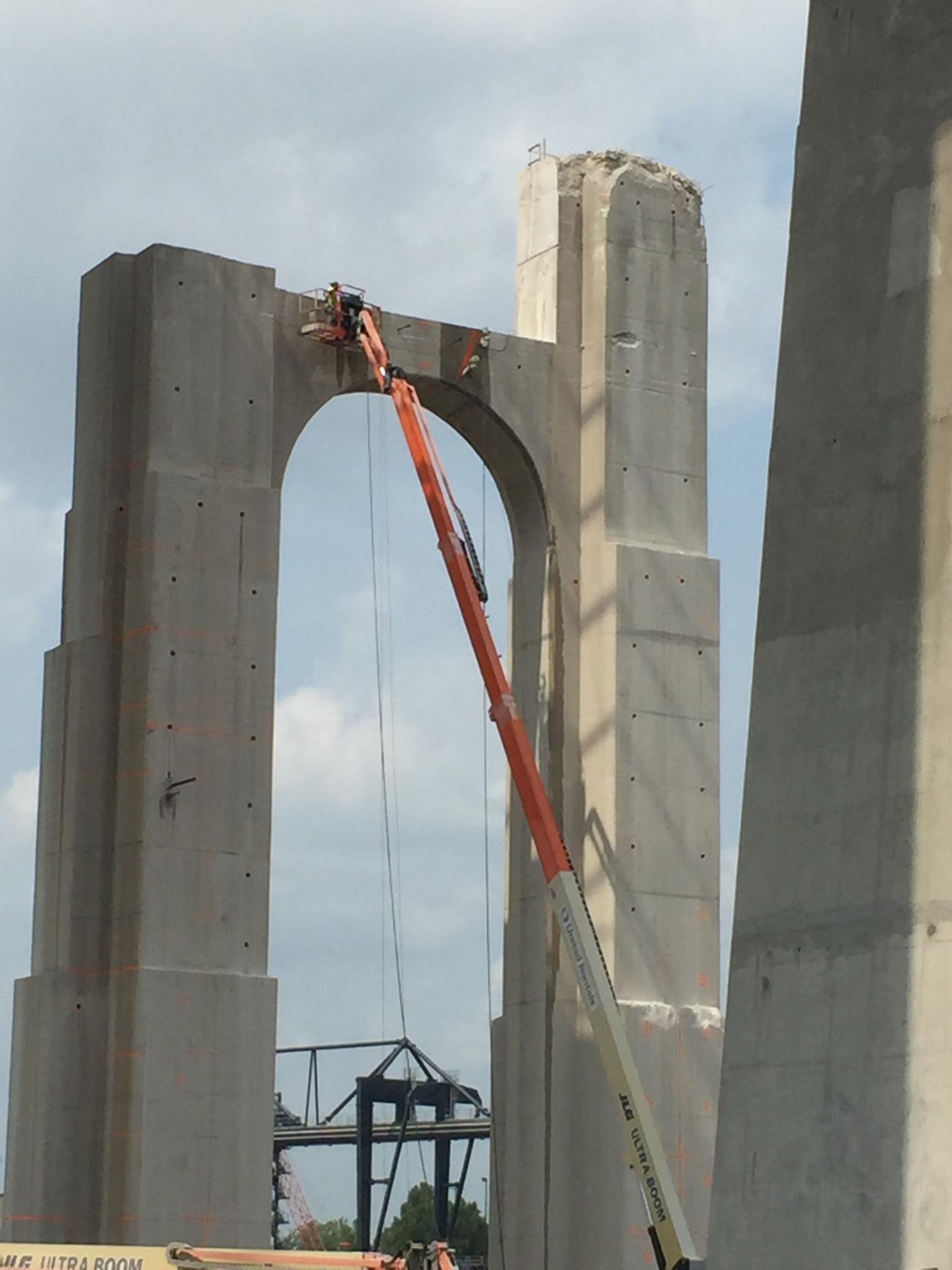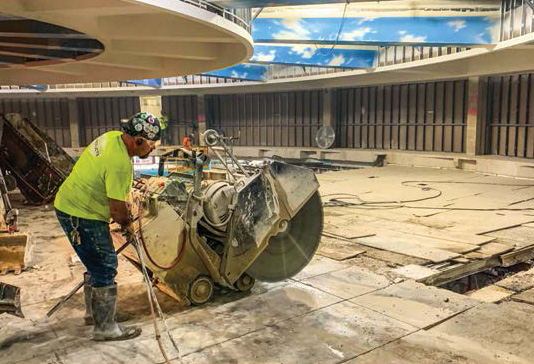
Paving the Way for an “Uncrackable Concrete”
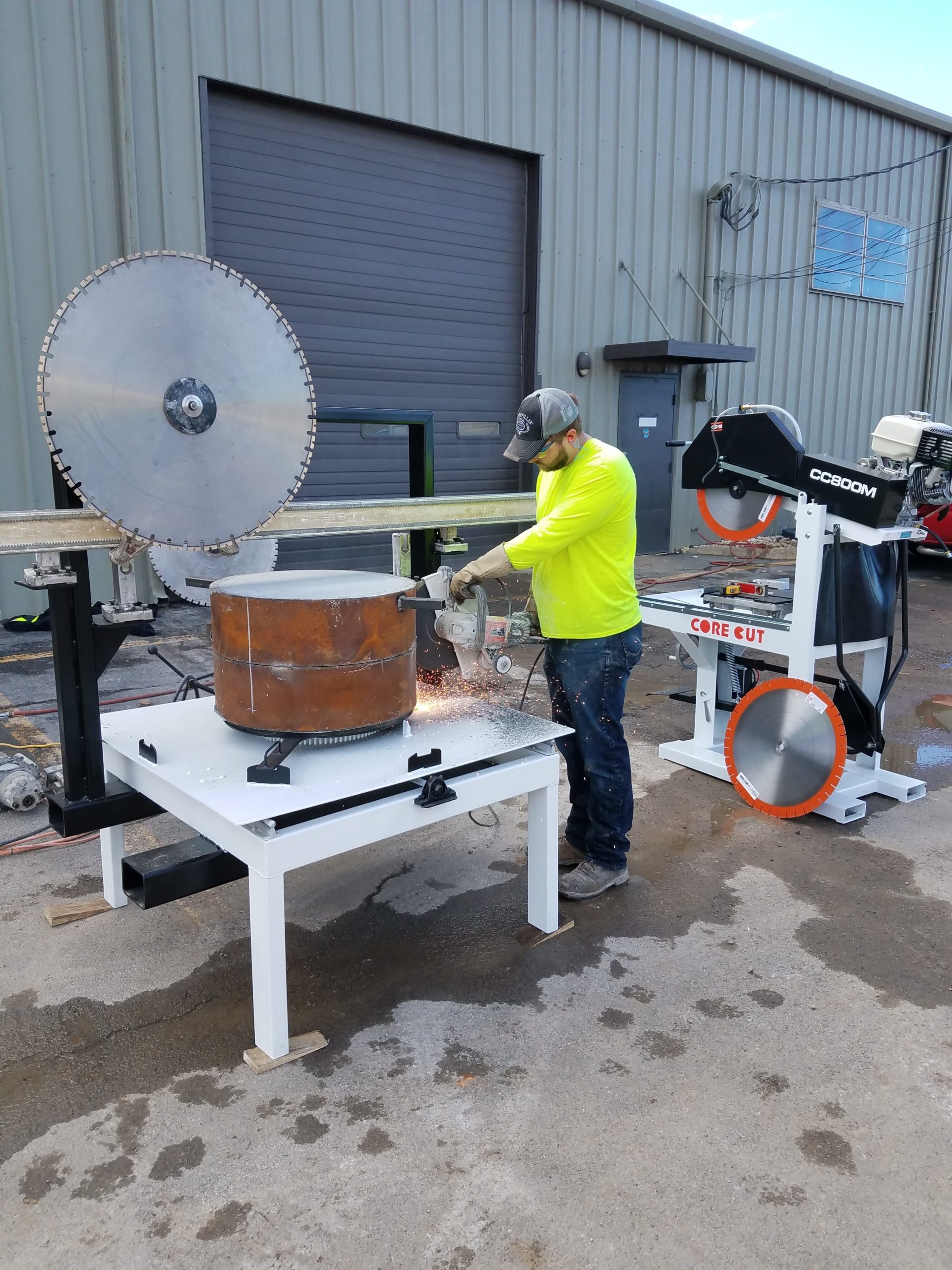
In December 2016, the University of Tennessee’s (UT) Department of Civil and Environmental Engineering approached CSDA member Cuts Inc. with an unusual request. In an effort to produce a more crack-resistant concrete they began a project called “The Effect of Alkali-Silica Reaction on the Fracture Properties of Concrete.” This test began with UT creating concrete cylinders encased in 9/16-inch thick steel casings 26 inches in diameter and 8-16 inches tall. These specimens were made with a highly reactive coarse aggregate which was chosen in order to increase the rate and amount of concrete cracking. UT needed a skilled contractor to cut test blocks of very specific shapes, sizes and orientations in order to investigate the effects that the cracking would have on the concrete strength.

Cutting steel from test cylinder with a Diamond Products Core Cut C16 and fiber wheel.
The University had specific ideas for the multiple shapes and angles desired for the test blocks but had no way to pull them out of the concrete cylinders themselves. Prior to being awarded this job, Cuts Inc. was asked to come to the university to discuss the job and go over details and drawings with engineers. Cuts Inc. has extensive experience fabricating custom sawing and drilling equipment as needed to perform challenging tasks, however, President Matthew Hephner admitted, “As I sat in the meeting with UT being asked how we would accomplish these unusual cuts, to be honest, I didn’t know exactly…but I did have complete trust that our team could and would figure it out so we confidently said, ‘Yes we can do it.’”
Cuts Inc. completed the test cuts in just three days but this was spread out over the course of a 19-month period. On days Cuts Inc. were provided test cylinders, they cut six blocks of various shapes at different angles out of each cylinder for a total of 54 test blocks. This required some trusty saws, blades, bearings and even a custom tool that Cuts Inc. had to design specially for this paticular job.

Examining the exposed concrete after four cuts had been made.
A custom-built table was needed before cutting could take place. The operators needed something that allowed infinite adjustment in both latitudinal and longitudinal directions, could be rotated and be locked in each position. Matthew Hephner designed this precision shiftable rotating table. He and his team built it in the Cuts Inc. fabricating shop using Acme threaded rods for the positioning and an 18-inch diameter slewing bearing able to support the 600-pound cylinders. The entire table can be adjusted and moved from left to right, has a rotating turn table in the center and features a locking handle in the front. All of the components were crucial to get accurate results. The use of a fork truck was necessary to lift these cylinders onto the newly crafted table. The first six blocks that were cut were simply to verify they could meet the required dimensions within the 1/16-inch tolerances. After this was successfully achieved, the operators then cut and removed the steel bands from the cylinder with Diamond Products Core Cut C16 saws and fiber wheels.
The next step involved positioning a cylinder and then strapping it to the table with ratchet straps. With the Pentruder 8-20HF wall saw mounted overhead, the first test block cut was made. A 42-inch diameter Diamond Products blade was used for each one of the cuts. Between nine and 11 cuts were made on each cylinder, with each cut being made in a specific order dictated by UT until six 200mm rectangles were created from each cylinder. Finally, Cuts Inc. used a Diamond Products Core Cut 811 block saw with a 24-inch blade to cut the additional recesses and slots in each block to create the various desired shapes. This unique job truly needed the precision and accuracy that only diamond tools can offer. Diamond sawing was the sole option for making such exact cuts. These tools and this process were repeated and used on all test cylinders to produce all requested test blocks for UT’s project.

Removing one of multiple cuts made to achieve desired shape. Table shown has an Acme screw adjustment to move entire table left and right, a rotating turn table in the center and a locking handle.
“We have all been pleased with the quality of cutting. In fact, the dimensional variation of cut specimens is smaller than the variation of the specimens that we cast ourselves in custom molds,”
said Graduate Research Assistant Nolan Hayes from the Department of Civil and Environmental Engineering at UT.
Cuts Inc. was able to deliver all of the requested test blocks on time and on budget with absolute precision in shape and size. The test blocks were a crucial part of UT’s project. UT performed different stress tests on the cut blocks to determine under which conditions they would or wouldn’t fracture. These results were recorded and continue to play an important role in the efforts to develop a highly durable concrete. UT plans to publish the results of their study once their research is complete – date to be determined. Cuts Inc. has been servicing the University of Tennessee with sawing and drilling services since 2004.
Company Profile
Cuts Inc. has been a CSDA member since 2012. They were founded in Knoxville, TN in 2004 and currently have 14 employees and operate seven trucks. They primarily service Tennesse and surrounding states, but will travel natiowide. They offer the following services: sawing, drilling, grinding, robotic demolition, excavtion, removal, nuclear work and fabrication of custom saw and drill attachments.
RESOURCES
Sawing Contractor
Cuts Inc.
Knoxville, TN
Matthew Hephner
Tel: 865-281-2887
Email: matt@cutsinc.org
Methods Used
Hand sawing, wall sawing











